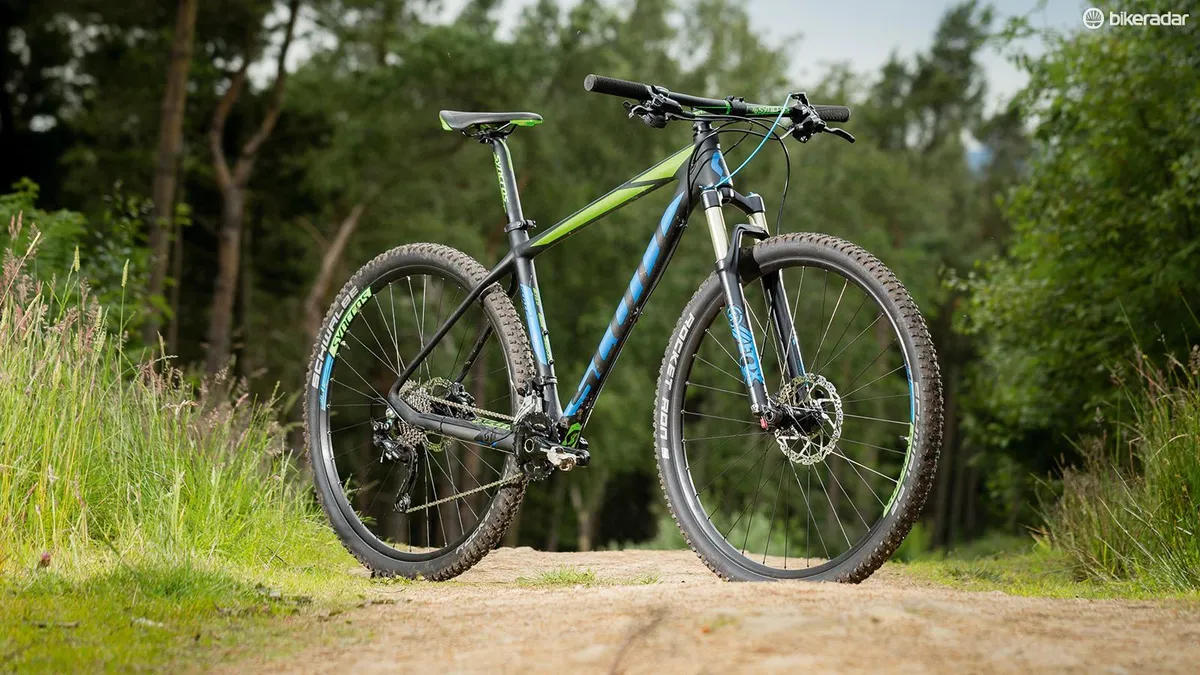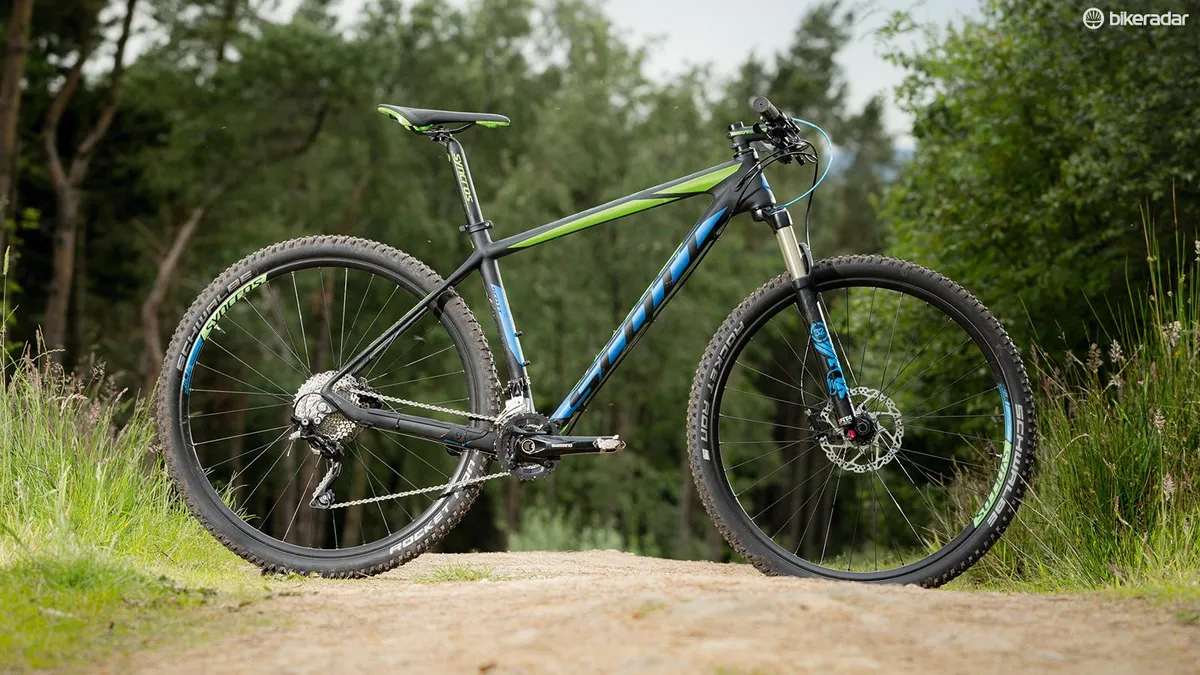Whether you’re watching World Cup XC or a local race, you’re likely to see a lot of Scotts and it’s been that way for decades. Its entry-level carbon bike is feather-light and handles nicely up front, but it’s blunter than we expected out back.
Scott’s Scale frame has been a benchmark for XC performance throughout its life (though it’s had a complete overhaul for next season). The head angle sits just shy of 70 degrees, which is slack in XC terms, and the seat tube is relatively relaxed at 72.5 degrees.
Butt-jointed construction (as opposed to Scott’s sleeved ‘IMP’ method) gives the frame its minimal weight edge. Subtle ledges and depressions are moulded into the ultra-thin tubes, to engineer their behaviour under load, and the gear cables disappear into moulded blisters. The rear brake hose runs externally, for easy servicing, and the relatively slender down tube swells just ahead of the press-fit bottom bracket.
Although the 650b-wheeled Scales use a conventional 31.6mm seatpost, the 29ers stay with Scott’s uniquely massive 34.9mm size and oversized, semi box-section seat tube. The chainstays and seatstay wishbone are pretty solid, too, though the seatstays themselves are flat and slim. The brake mount sits on the chainstay to stop it affecting the flex of the seatstays.
Smart buyers should probably wait to see what happens to the Scale range’s pricing
While this entry-level frame comes with a DT Swiss QR axle, you can upgrade to the same 142x12mm system as the more expensive models, but you’ll need to change your hub/wheel at the same time. A band-on front mech makes for a clean look if you single-ring it.
The kit
The relatively heavy, non-series Shimano crankset and Deore front mech definitely make single-ringing tempting, but the XT rear mech doesn’t have a clutch and the 10-speed cassette only sports an 11-36t spread so you’d probably also need an expander cog. The 2.1in Schwalbe tyres don’t cushion trail chatter as well as fatter rubber would, and the Shimano rear hub has noticeable engagement lag on stop/start trails.

The Fox 32 Float FIT4 fork is great and is enhanced with Scott’s own double-trigger semi and full lockout remote lever, which is much better to use than Fox’s model. The basic Shimano brakes are functionally fine, if heavy, and the cockpit with custom 10-degree rise/drop stem (most are /- 6 degrees) from Scott sub-brand Syncros is well shaped for purpose. The clampless grips droop off the bar ends, though, and the monster 34.9mm seatpost doesn’t do in-saddle comfort any favours.
The ride
A thumpingly firm ride in the saddle is the only obvious flaw. Scott doesn’t like a lot of seatpost flex and prefers to let the rear stays do the ‘suspension’ work. Certainly, the back wheel doesn’t hang up and choke like the Ghost’s, and out of the saddle it’s pretty smooth, even with a skinnier rear tyre. This doesn’t bring any major benefits, though, apart from less seat sway when grinding a big gear, and if you get caught out while seated you’ll know about it, which could accelerate your fatigue.
Happily, the front end is spot on and puts the wheel where you want it, with accuracy and authority, rather than twitching and fretting when things get fast and loose. The slimmer, flatter main tubes take the sting out of the vibrations that the fork can’t screen, and although the saggy grips irritated my forearms, my palms never felt punished.

Even with its hefty Deore parts, this is still a very light bike, so the potential for a really featherweight weapon is clear if you’re prepared to upgrade. With its somewhat compromised spec and a totally new 2017 frame due imminently, smart buyers should probably wait to see what happens to the Scale range’s pricing over the next few months.
Details
Fat post: While the 650b Scale gets a 31.6mm seatpost, the 29er still uses an uber-stiff 34.9mm pipe.
In the frame: The 935 gets a lower tier HMF rather than HMX carbon frame, but it’s still super-light.
Fancy Fox: The Fox fork delivers its 100mm of travel with impressive control and Scott’s twin-lever RideLoc remote is excellent, too.

